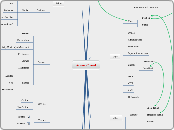por Kenneth Gourlay hace 14 años
325
Access Contol
When dealing with access control, it's crucial to recognize both internal and external threats. Internally, issues such as password sharing and privileged access can lead to unauthorized sabotage.

por Kenneth Gourlay hace 14 años
325

Ver más
Smartphone
Cell
Desktop
Integrated Circuit Disk (thumb drives)
Removable disk
Web-sites
Disk
Tapes
Screens
Directory Service
Classification is difficult for most users to understand and is, therefore, often neglected.
Classification is essential for data protection.
Unclassified
Top Secret
Secret
Classified
Protected C
Protected B
Protected A
Enterprise Controlled Access
Database Controled Access
Application Contoled Access
Authorization can be direct (person 1 has access to system 1) or it can be abstracted by roles and entitlements (the auditor role has a read-only entitlement on to all data and meta-data)
Authentication is how you prove who you are:
Authentication can be performed using passwords, tokens or biometrics or a combination of the three.
Identification is about who you are:
"I am Santa Clause"